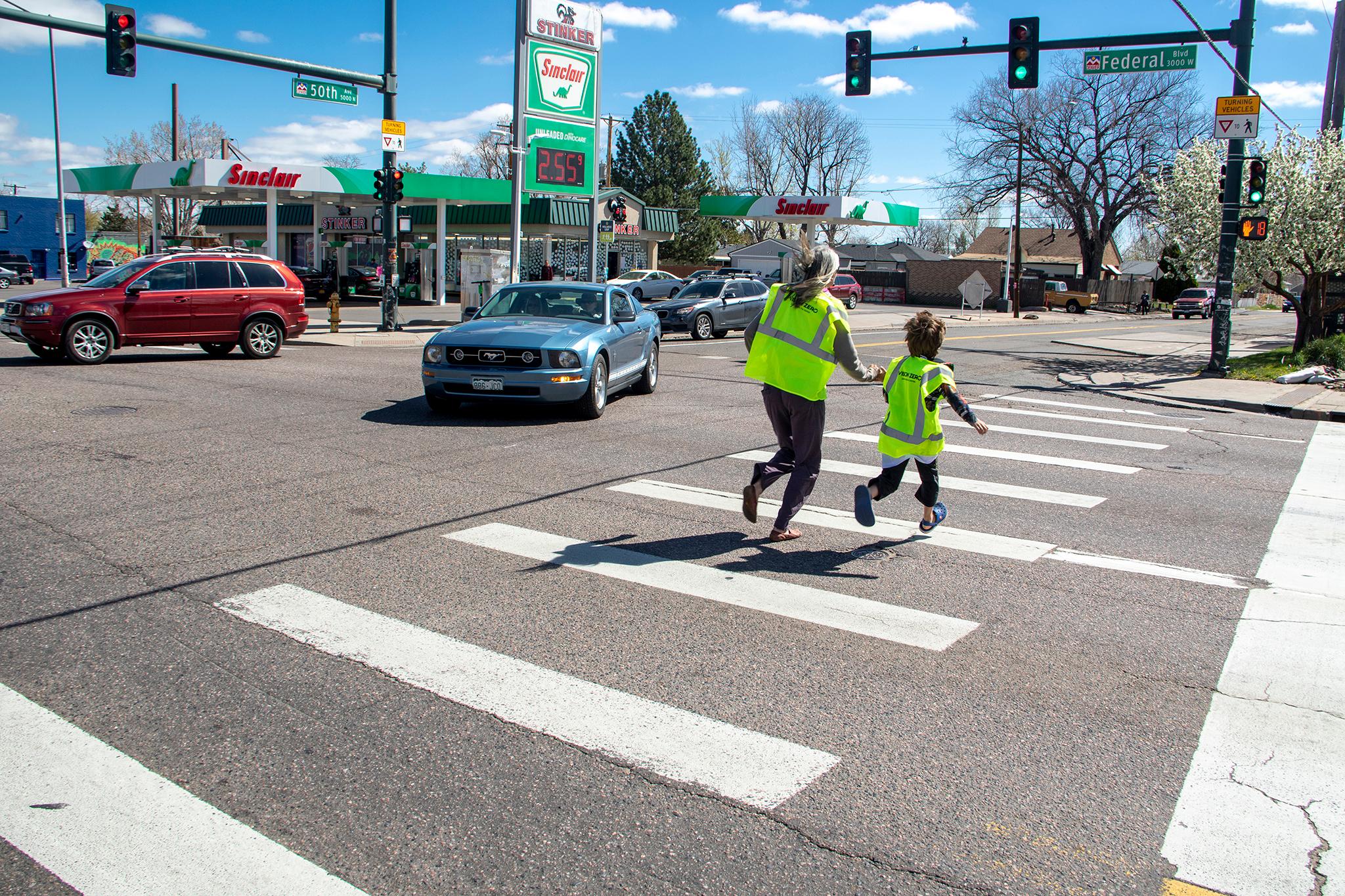
Car-centric roads in the Denver metro could become safer for pedestrians, cyclist and people with disabilities under a program the Colorado Department of Transportation announced Thursday.
Under the Safer Main Streets Initiative, the department and Denver's metropolitan planning organization will award up to $47 million to local governments. Officials say it will amount to a region-wide effort to improve safety for all users.
It’s an especially important cause now because the coronavirus has led to an increase in the number of people cycling and walking, said Nicole Nason, administrator of the Federal Highway Administration.
“Our streets are teeming with risks, for drivers and pedestrians alike,” she said in a Thursday news conference.
Traffic deaths and serious injuries have risen in recent years in the region, with cyclists and pedestrians making up a disproportionate number of casualties. Most have occurred on just 9 percent of the area’s roads — a “high-injury network.” The most critical of those are in relatively dense areas like Federal Boulevard in Denver, West Colfax in Denver and Lakewood, and East Colfax in Aurora.
CDOT and the Denver Regional Council of Governments are providing the funding. Projects could include new sidewalks and crosswalks, bicycle lanes, traffic signal upgrades, better access for transit stops and measures meant to slow traffic speeds.
“The more we can get overwhelmed with good ideas the better,” said Shoshana Lew, CDOT’s executive director.
The overarching goal is to reduce fatalities and serious injuries on the area’s transportation system by making travel safer — particularly for those who aren’t in a car.
“We must continue to diversify our transportation portfolio if we want to be who we say we want to be when we grow up as a region,” said Douglas Rex, DRCOG’s executive director. “There's a lot of work to be done.”
The projects will complement DRCOG’s Vision Zero safety plan, adopted in the spring, that sets a goal of zero traffic deaths in the nine-county Denver metro. CDOT set its own similar goal in 2015.
Rex said the $47 million isn’t enough to complete all of the infrastructure upgrades necessary but represents a good start. Another $30 million is "pending," per a joint-agency press release.
Rex also said driver behavior will be an important factor in meeting the zero-death goal.
“People being attentive behind the wheel would make a tremendous difference,” Rex said. “It's not just about infrastructure and capital investment.”
Improvements could mean slower travel times for some drivers in some circumstances, Lew said, while measures like traffic signals could make travel more efficient for drivers and pedestrians. But drivers should practice patience and keep safety top of mind, she said.
“Our hope is to raise the awareness of everybody needing to be careful, mindful of themselves and each other,” Lew said.








